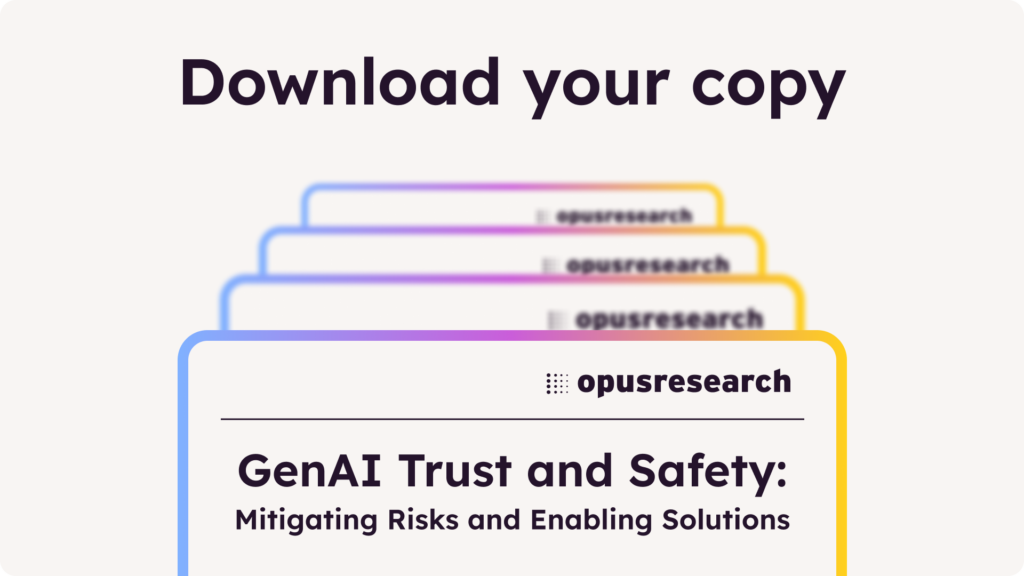In 2025, voice is back. But then again, it never really left.
If your 2025 strategy assumes that inbound call volumes will be declining, you’ll want to think again. Experts have been predicting the death of the phone call since the invention of the push-button phone. Email, smartphones, and chatbots were all expected to replace calls, yet they haven’t. People still pick up the phone. They prefer the speed, clarity, and connection of a real conversation. In fact, recent McKinsey research has found that 71% of Gen Z actually prefer a live phone call as the quickest, most convenient way to get a resolution.
We are in the midst of a generational shift, as transformative as the rise of websites in the early Internet era or the mobile app revolution that followed. Except this time, we’ve moved from clicks to conversations. And that conversation is powered by AI.
Consumers are already talking to their devices more than they type, and AI agents have become as essential as mobile apps and websites – perhaps even more so. Businesses can expect a surge in voice-driven interactions in 2025. From OpenAI’s and Google’s latest voice models to Apple’s and Meta’s AI-integrated wearables, the momentum is undeniable. And businesses that don’t prepare now will get left behind.
In a recent webinar, Parloa’s Lead AI Evangelist, Maik Hummel, and Head of Product Marketing, Paul Biggs, explored the top AI technology trends shaping voice in 2025 — and offered advice on how enterprises can stay ahead. You can listen to their full webinar here.
Here are six trends they are observing:
1. The Rise of Real-Time Voice AI Agents
We’ve spent years refining AI that can understand, process, and respond to text, but 2025 has ushered in the next evolution: real-time AI voice agents. OpenAI’s Realtime API and Gemini Live are among those leading the charge, allowing AI to process audio in, and audio out — meaning voice-native assistants that listen, think, and respond dynamically in real time. It’s as profound a leap as between a map and a GPS.
You might be thinking, what does this change? For one, AI-driven voice interactions now feel more natural, like human conversation, as the agents adjust speed, tone, and responses based on a user’s voice context. With lower latency and higher attunement to callers, AI also sounds and responds like a real customer service representative — but doesn’t sweat the repetitive tasks, and is available 24/7.
For businesses, this is a game-changer. The Gen AI-first contact center isn’t something on the roadmap. It’s happening now.
2. From Canned Dialogues to Dynamic Conversations
Conversations have left behind the scripted flows. Gone are the days of rigid IVR systems or Dialog Flows that forced frustrated customers to press numbers or repeat information. AI is replacing decision trees with natural language briefings, allowing AI agents to respond fluidly and intelligently based on context.
This shift is freedom for customer service because it eliminates the need to predefine every possible customer scenario. Instead, AI agents can understand, adapt, and drive conversations naturally, making interactions feel as easy as talking to a friend.
But this also demands a change in how we think about the old AI implementation playbook. To deploy successfully, businesses must reimagine how they use AI agents. The old way — manually scripting responses and categorizing intents — is being replaced by prompt engineering and real-time learning. And in 2025, the best AI-powered contact centers will be those that leverage this new paradigm of intelligent automation.
3. AI That Speaks Every Customer’s Language—Instantly
One of the biggest barriers in customer service has always been language. Until now, businesses have needed an army of human agents fluent in multiple languages to handle international customers. AI-powered real-time translation has changed that, and in 2025 those global call centers are going to be revolutionized.
That’s because, thanks to solutions like Parloa’s real-time translations (RTT), live AI interpreters can now translate conversations on the fly, understanding customers and speaking back to them in their language, allowing businesses to serve their global audiences seamlessly. A Spanish-speaking customer can call a German-based company and experience instant, fluid translation – without a language barrier slowing down service. Just like talking to (a multilingual) friend.
This means better customer satisfaction, faster resolutions, and truly borderless support.
4. The Rise of AI-to-AI Conversations
Another exciting trend we are seeing is that in 2025, AI agents won’t just talk to customers — they’ll talk to each other. That will give systems exponential power because they won’t be limited to scaling with human limitations.
This means that when a customer calls in with a request, an AI agent can seamlessly interact with another AI system — a payment agent, a booking specialist, or even a partner company’s AI agent — to retrieve information and resolve issues in real time.
For businesses, this unlocks huge efficiency gains:
- Faster service resolution – No more waiting for human agents to check systems manually.
- Automated multi-system queries – AI handles cross-platform interactions in seconds.
- AI as a true digital assistant – Handling complex customer needs without human intervention.
This sort of AI-to-AI communication radically transforms the way customer service is managed, making it smarter, more connected, and more autonomous than ever before.
5. AI Safety & Compliance: The Non-Negotiable Factor
Of course, as with any change, there is a need for responsibility. The rise of autonomous AI agents in 2025 comes with a critical question: Is AI safe to use in customer interactions?
In 2025, AI safety and reliability is a top priority for businesses deploying customer-facing AI. Companies that fail to implement trust and safety measures will face regulatory scrutiny, customer distrust, and potential security risks.
Parloa, along with other industry leaders, is leading the charge in AI safety, ensuring that:
- AI interactions are transparent and traceable.
- Sensitive customer data remains protected.
- AI systems meet the highest reliability standards.
This sort of compliance is essential, and businesses investing in safe, responsible AI implementation will gain the trust of their customers – and a competitive edge. To learn more about preparing your organization to adopt agentic AI, download a complimentary copy of Opus Research’s report: “GenAI Trust and Safety: Mitigating Risks and Enabling Solutions.”
6. AI Agents Driving Revenue: Not Just Efficiency
For years, customer service has been seen primarily as a cost center, and measured by efficiency metrics, like average handling time (AHT) and first call resolution (FCR). But in 2025, AI agents will flip that script, and transform contact centers into revenue-generating engines.
With AI agents capable of personalization and handling of complex inquiries faster, companies can shift focus from cost-cutting to growing Customer Lifetime Value (CLV).
Here are a few ways AI agents are ramping up revenue generation:
- AI agents as a revenue driver – AI agents can proactively upsell and cross-sell relevant products and services based on real time insights and context.
- Hyper-personalization at scale – AI agents can analyze vast amounts of customer data instantly, flagging things like renewals or upgrades, or leading customers to things they would like based on past buying behavior
- Increased customer loyalty – The best revenue strategies start with retention. Because AI can predict churn risk or probability and analyze sentiment it can proactively, and calmly, intervene before a customer walks away.
- 24/7 service and sales – Unlike human agents, AI agents never clock out. They can capture leads and make sales around the clock, taking on the graveyard shift and ensuring companies never miss a middle-of-the-night impulse buy.
Thanks to the new wave of AI-driven customer engagement, in 2025, businesses will measure customer success not by efficiency alone – but also by revenue impact.
The Path Forward: The Gen AI-First Era Has Begun
All of this is to say that the technology is finally in place to support a genAI-First Contact Center — and in 2025, voice AI is making that leap to a business-critical tool that will potentially grow to carry the majority of your live customer service workload.
Companies that ultimately embrace AI voice assistants, AI-to-AI conversations, and scalable automation are leading the charge here. Those who resist digital transformation will struggle to keep up with rising customer expectations.
AI voice is ready. The question is: are you?
Let’s talk. If you’re ready to explore how AI-powered customer interactions can transform your operations, connect with us at Parloa.




